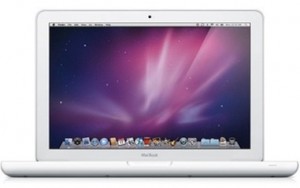 In my last article, I noted that Apple was providing undocumented case crack warranty extension for the 13-inch Unibody (Late 2009 & Late 2010) MacBook models. Specifically, Apple replaced the entire display on my two-plus-year-old machine when hairline cracks formed around the display hinges.
In my last article, I noted that Apple was providing undocumented case crack warranty extension for the 13-inch Unibody (Late 2009 & Late 2010) MacBook models. Specifically, Apple replaced the entire display on my two-plus-year-old machine when hairline cracks formed around the display hinges.
Indeed, cracks have now formed around the 3, E, and D keys. And, like older generations, my palm rests are blue as day.
While I had promised Moshi a review of their palm rest covers for the unibody MacBook, I’ve gotten an influx of tips that affirm that the silent recall now extends to the top case, too.
I’m still going to give Moshi their review though, it’s a good product for protecting MacBooks that don’t suffer from this design flaw.
I’ll be taking my MacBook back this week, and see what they’ll do. I’ve even heard of a few extreme cases where MacBook owners have gotten swapped out for MacBook Air and MacBook Pro 13-inch units, after more than a couple of warranty replacements. Ideally, I think I’d rather put mine on eBay than deal with that degree of hassle.
That said, anyone else with a unibody MacBook run into similar experiences at the Genius Bar?
I took my Oct 2009 MacBook into the genius bar regarding the cracking hinges on my unibody and was told that I could spend $400+ to send it to Apple Outlet to be fixed. I was shocked when I read this post (months after taking it in). The person who helped me had the “there’s nothing we can do about it” attitude. What ended up happening with your MacBook?
Apple refused to fix my MacBook, claiming that the cracks were not in the “areas covered by the warranty extension.”
Obviously, Apple said the same thing to thousands of prior-gen MacBook owners, only to later expand the program several times, in order to include support for previously-not-covered case cracks.
My best advice? Take it back to the store again. There are good odds that it is now a covered repair, and the worst they can tell you is no. Also, every time a MacBook owner brings in one of these CrackBooks, it adds to Apple’s internal tallies, so they’re more likely to take action based on complaint volume.